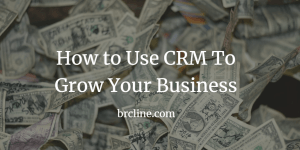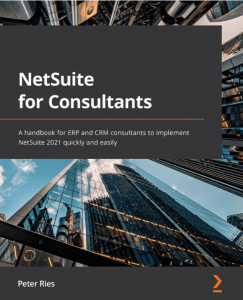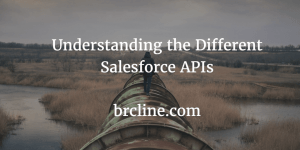In the days of early computing, it was rare that companies would have a way of communicating with their customers that would scale as the company grew. Everything went into different “data silos” that wasn’t necessarily accessible to the right person at the right moment. When I started my career, I worked on phone systems that were mostly being used by mortgage brokers that usually worked off of lists of potential customers in excel.
Usually the brokers had no insight into how things were going or would go unless they kept adding columns for notes each time they called or emailed the person. If the mortgage broker worked on a team or had a manager – it was nearly impossible to coordinate how things were going because everything was based off of the data or papers even that one employee would keep on their computer or on their desk.
I really started to notice a trend with these lists and with call centres, it really seemed like companies were spending a ton of time passing around Excel files and keeping little bits of notes in the files. After a month or so of observing the calls and the way data was going into our system, I suggested to my boss at the time that we should have a “Follow up” button and text box where people could enter some notes about the call. This was my first time really getting involved with CRM and since then I’ve seen a lot of changes.
What is CRM?
CRM stands for customer relationship management. Customer relationship management software is designed for companies of all sizes to better manage how they sell to leads, manage their customers and provide support for customers. A really good, simplistic, way of thinking about CRM is to think of it as an address book that’s being constantly updated every time your staff, your leads, or your customers do anything.
Well designed and implemented CRM software can help companies dramatically improve sales and customer support. Along with helping sales and customer service there will be improve visibility to management. CRM applications are built around the concept of relationships that means contacts that work for the same company are usually grouped together and can allow anyone on your team to see when you were last in contact with them and allow you to get introduced to them or etc.
CRM allows management to see the big picture of contacts, leads, and deals. It allows them to understand what the Sales Pipeline will look like, the problems customers are having and possibly even help them provide better guidance and management. CRM isn’t all that exciting outside of the business world, but it is a game changer for all sized companies and organizations.
Before Software As a Service (SaaS)
Before Salesforce and other hosted solutions became available companies would spend many thousands of hours, and millions of dollars building systems that would allow staff to potentially be able to intelligently communicate with customers based on where they were in the Sales Cycle or solve any problems they were having. A lot of the systems were very hard for staff to use and usually impossible for management to use to gather insights into what happened.
Typically systems would be built using this sort of approach:
- Business Analysts would spend months gathering requirements.
- Software architects would spend a few months designing the architecture or would make a purchasing decision on some really complex software.
- Hardware would be purchased which might take the provider a month or more to deliver and then at least a few days for staff to configure and install.
- If a buy design was made – then somebody would install the software and spend weeks setting up really complex user access. A data migration process would need to be designed which could take anywhere from a few hours to a few months. If a build decision was made, which was the norm until about 2010 or so, then developers would take months to build a system that might work on only one browser and have very limited user permissions.
- Eventually everything would be made available to staff – but probably wouldn’t scale very well or work with the user’s system which would result in staff wanting to go back to the old system, etc.
Software as a Service Providers such as Salesforce changed a lot of this. Yes, there’s still complex integration and migrations that might have to happen but a lot of functionality already exists out of the box if your company takes the time and understands how the system works.
Typical processes now look something like this:
- Business Analysts would spend months gathering requirements.
- Software Architects spend a few weeks learning about the system, and understanding how it can be customized and then provide a plan to the IT department.
- A few members of the staff spend a couple of weeks customizing everything and then beginning a data migration process which may last up to a few weeks. Customization can begin if applicable which may take a while – but staff might be able to begin using the system now.
- Staff begin to use the system and have some complaints – but generally things work cross platform pretty well and most things can work on mobile devices.
Salesforce and most of the other providers provide dozens of different ways to customize functionality and make changes to standard functionality. For example, Salesforce allows you to design your own Sales Process instead of locking your company into a particular one that won’t necessarily suit you.
Is making the decision to build a good idea?
In general, I recommend really thinking hard before making a build decision for CRM systems because they will be so central to your company and most software already connects to most hosted CRMs. For example, pretty much all marketing automation tools already connect to Salesforce. Some of the CRM systems are relatively affordable when you consider that the monthly cost per staff member can be well under $100 a month.
Salesforce releases thousands of changes every quarter into their software, it would be impossible for most companies to keep the same release cadence without building an army of developers. The have mobile apps for both Android and iOS which work really well with their CRM System and can be very customized by Salesforce Developers. I can barely keep up with the number of changes they release, I’ve documented the approach I use to stay informed of Salesforce Releases.
Common CRM Providers
There’s literally hundreds of software companies that provider various levels of CRM. I strongly recommend taking the time and understanding what your company wants to get out of the system before you pick a provider. If your company just wants to have visibility into all of the leads or contacts somebody has it might make sense to look at using Zohoo which is relatively simplistic and is priced pretty low.
If you work for a medium sized to enterprise sized company it probably makes sense to look at companies like Salesforce which is the market leader or Microsoft Dynamics or Oracle. All three of these companies offer API access, possible customization and enterprise level support. It’s been a long time since I have looked at Dynamics and I haven’t ever looked at Oracle’s offerings, but I know that Salesforce is insane and offers a free trial. I believe the trial is 90 days, although they would probably extend this if your company is large or interesting enough.
Also published on Medium.





